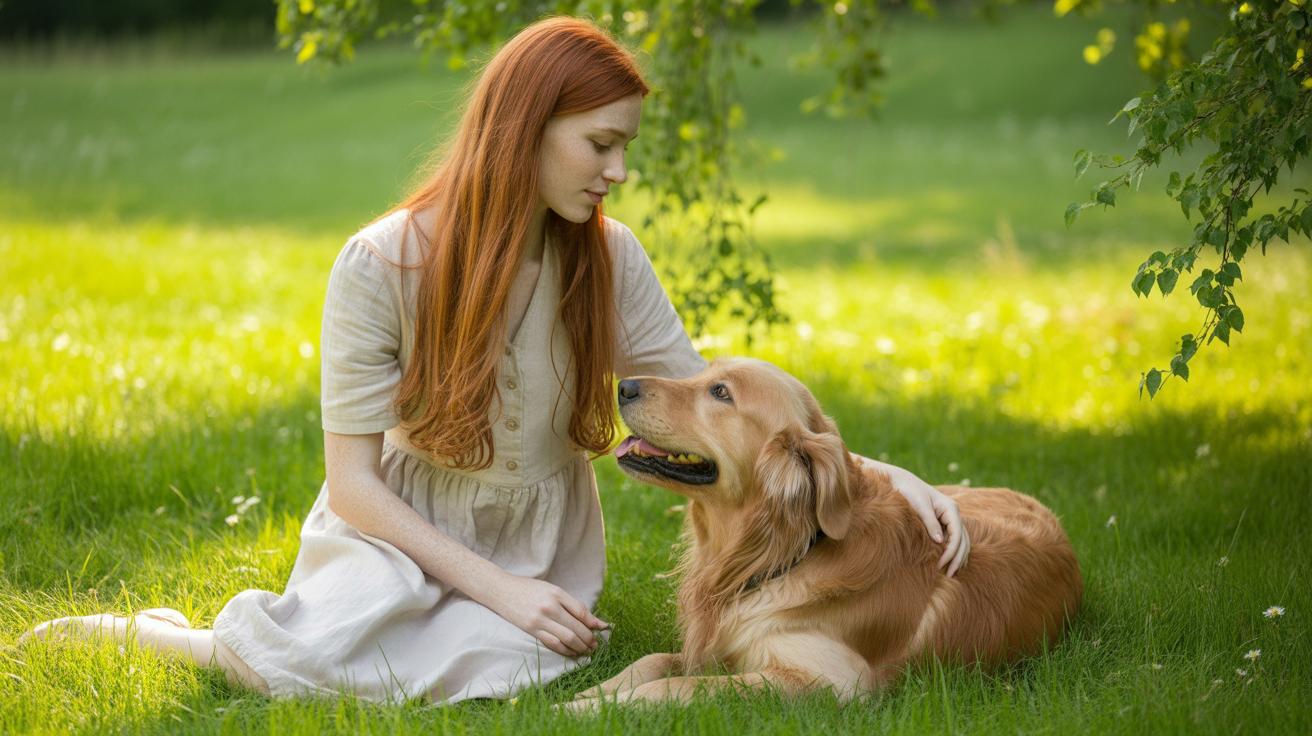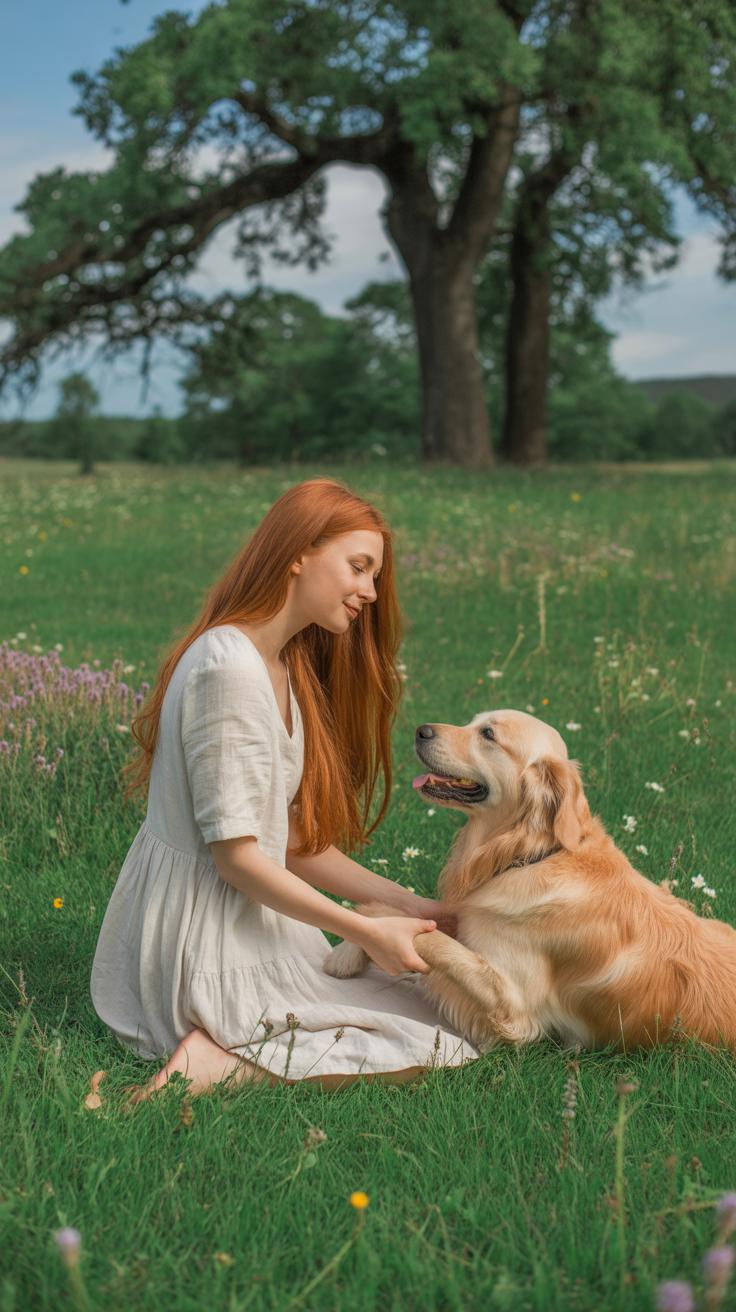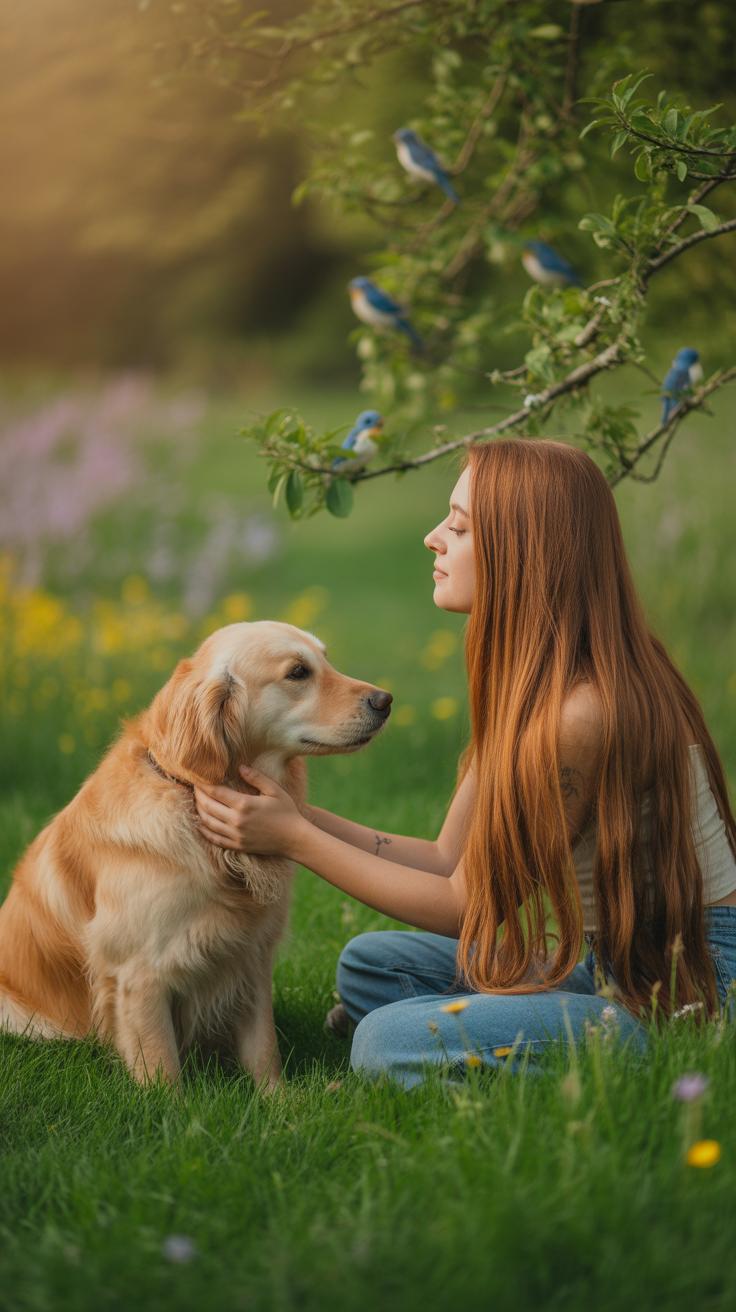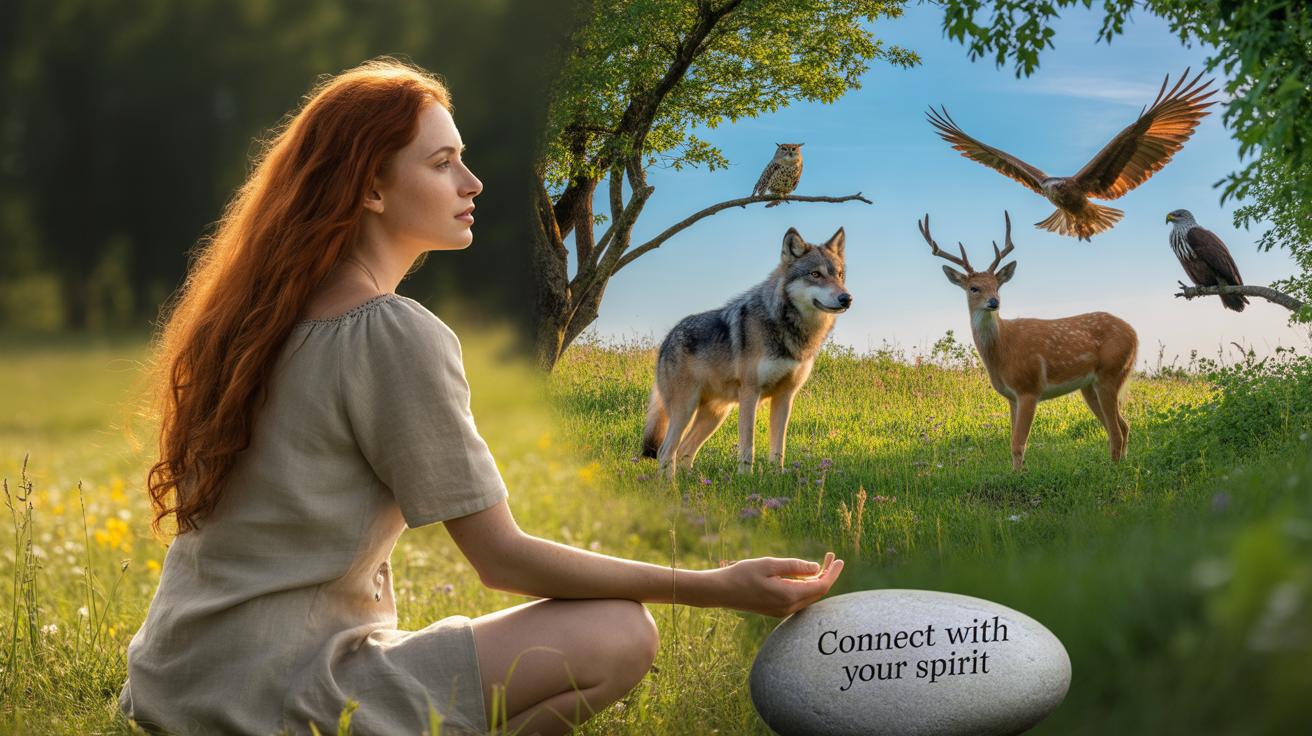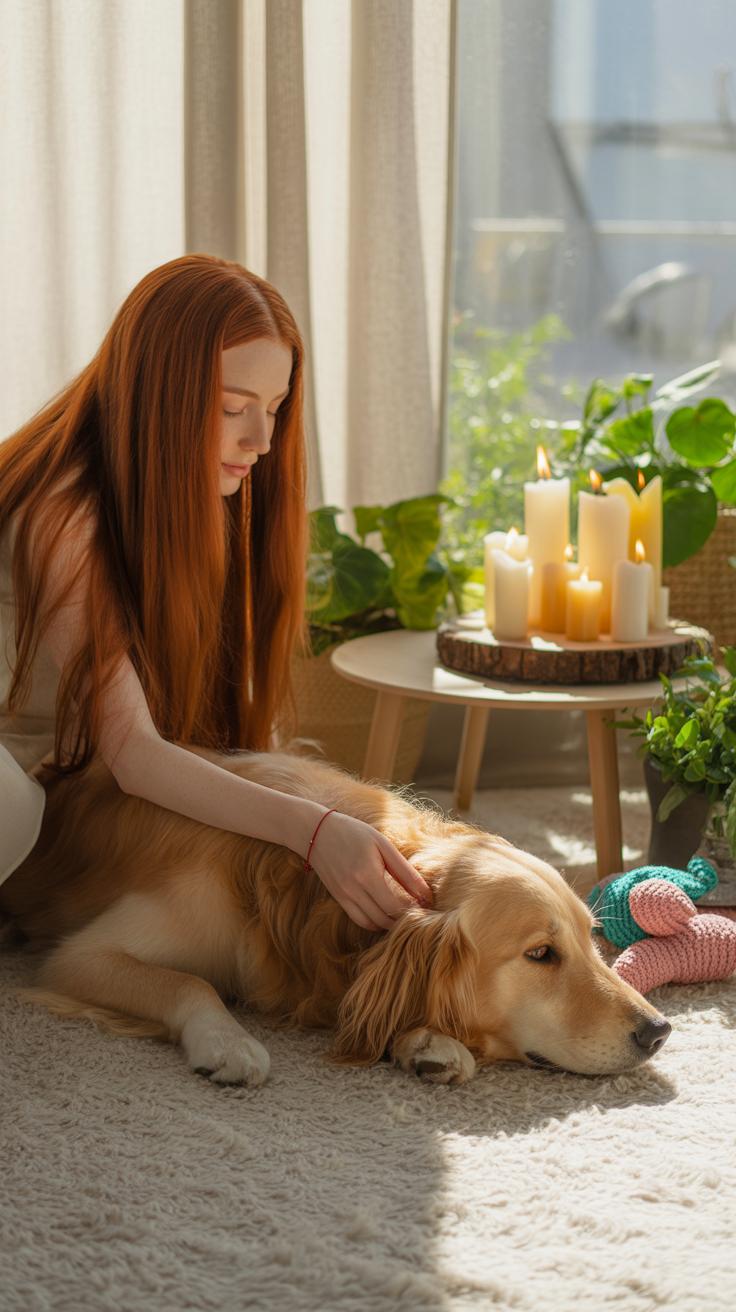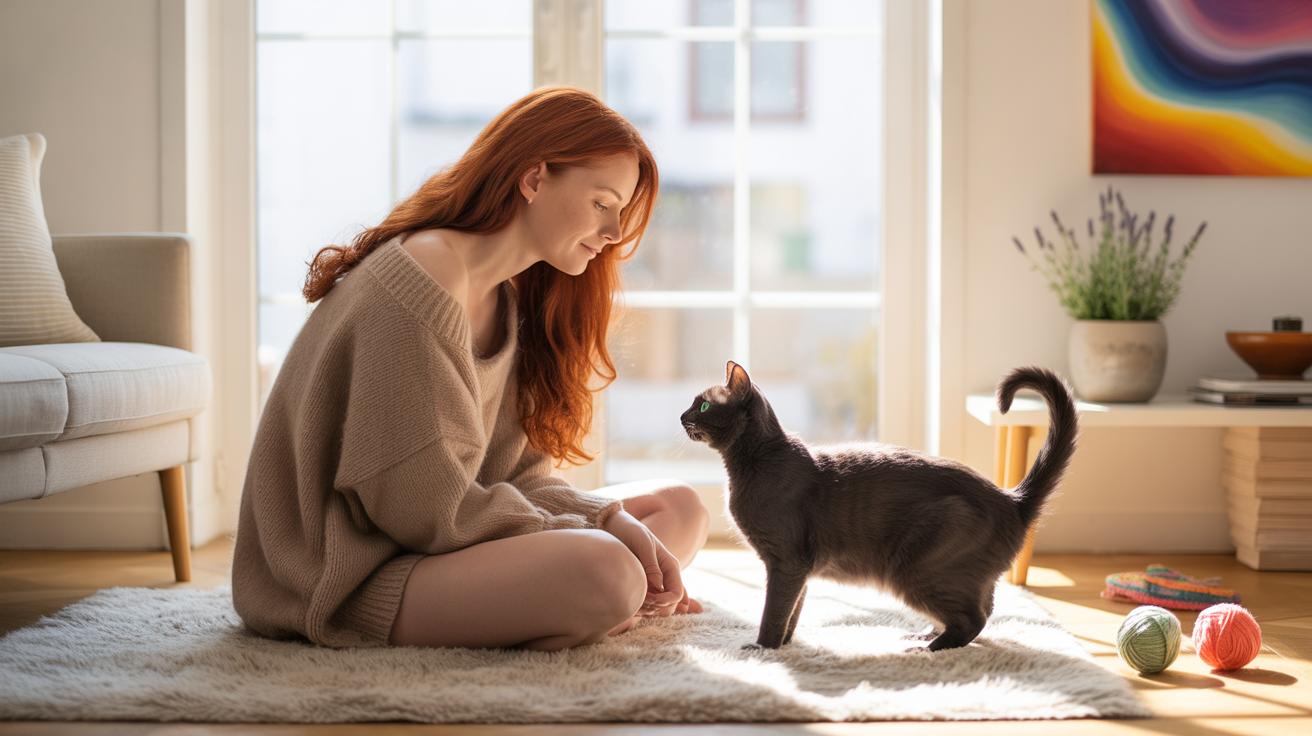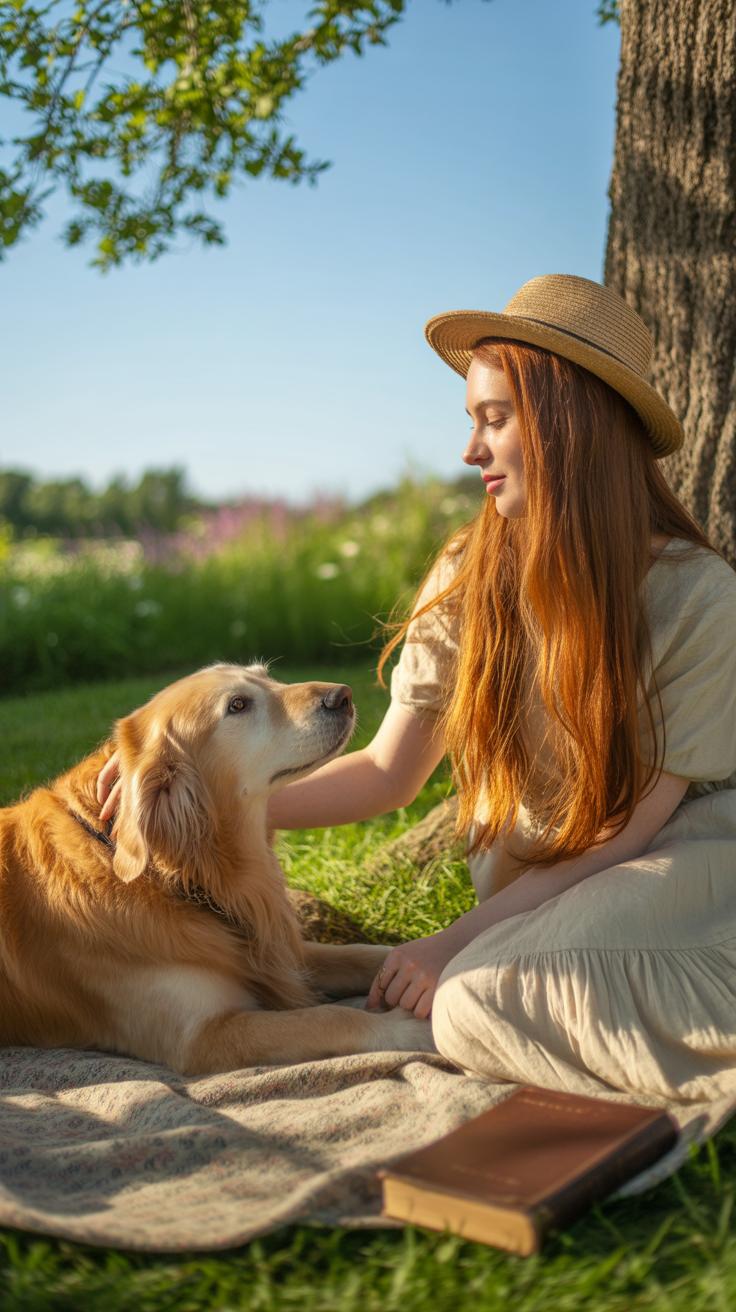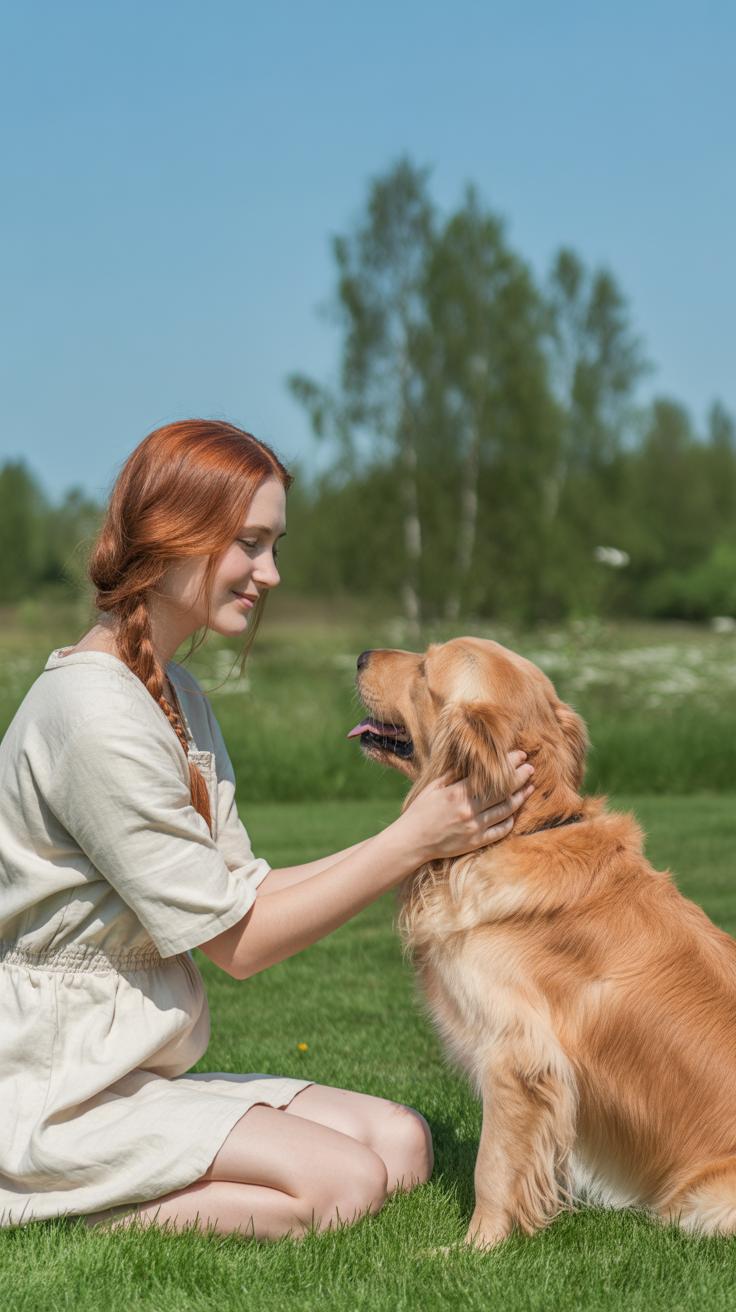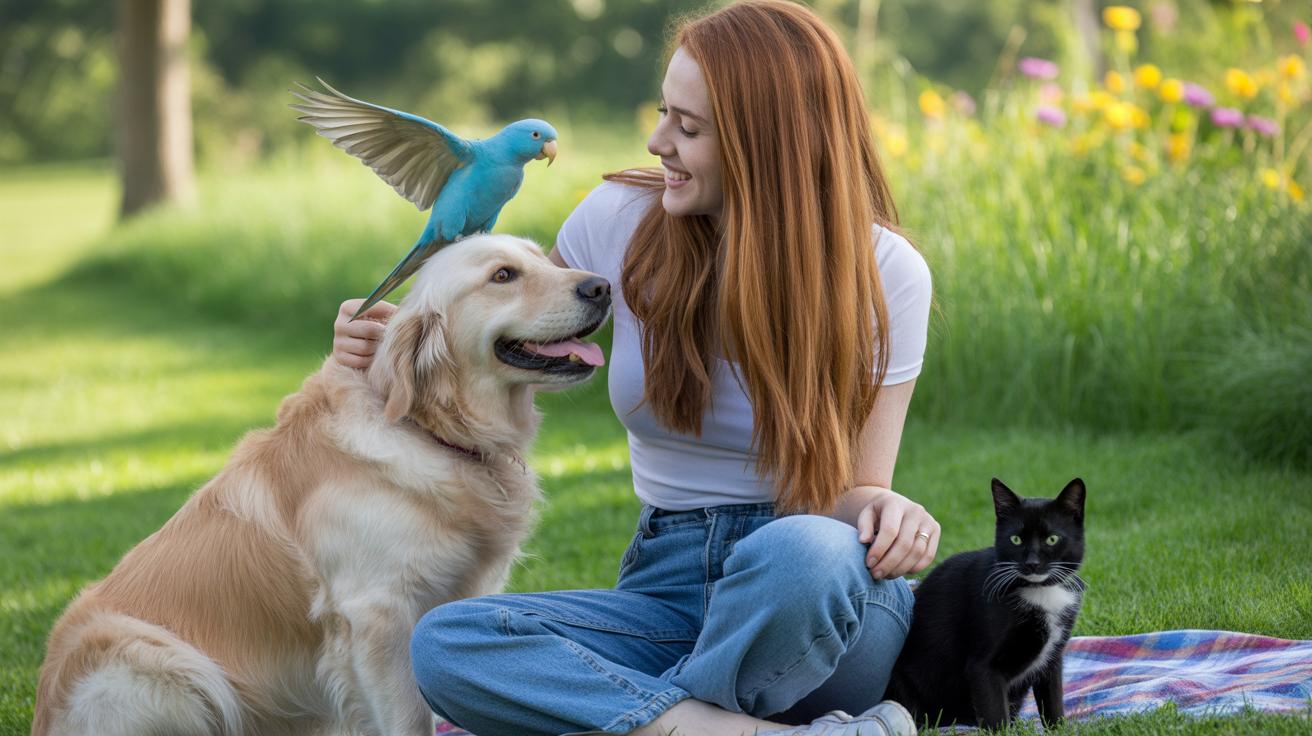Introduction
Grounding techniques offer a way to bring your attention back to the present moment. They help you stay calm, especially when stress or anxiety rise. When you feel grounded, you can better connect with your feelings and surroundings. This is very helpful when spending time with your animal friend.
In this article, you will learn grounding techniques that not only calm your mind but also deepen your bond with your pet. These simple steps can transform how you interact with your furry companion. Each method will guide you on how to stay calm and fully present, creating stronger trust and friendship.
Understanding Grounding Techniques
What Grounding Means
Grounding is basically about bringing your attention back to the here and now. It means focusing on what’s happening around you or inside your body, rather than getting lost in worries or distractions. You do this by tuning into your senses—what you see, hear, feel, smell, or taste—and by noticing your breathing. For example, feeling the texture of your pet’s fur or the rhythm of your own breath can pull your mind out of overwhelm and into the present moment.
It sounds simple, but it’s not always easy, especially when your mind races or your body feels tense. Still, grounding lets you pause, which can make a surprising difference in how calm you feel.
Why Grounding Helps You And Your Pet
When you’re grounded, your stress levels drop. Your breathing slows down. Your heart rate eases. This sets a peaceful tone, not just for you but for your pet too. Animals pick up on your energy, even when you don’t realize it, so if you’re jittery or restless, they often become uneasy as well.
By calming yourself first, you create a kind of quiet space where communication can flow more clearly. Your pet feels safer and more connected because you’re fully present. It’s like tuning into the same frequency, only it doesn’t require words. So grounding doesn’t just calm your body and mind—it helps you ‘speak’ to each other in a way that’s gentle and understanding.
Breathing Exercises To Find Calm Together
Basic Deep Breathing
Try this simple practice whenever you feel tension settling in. Start by inhaling slowly through your nose, filling your lungs completely—hold for just a second or two—and then exhale gently through your mouth, letting the air escape fully. Repeat this for about five to ten breaths. This slower, deeper breathing triggers your body’s relaxation response. You might notice your shoulders dropping or your mind clearing a bit. It’s not magic, but it helps shift focus from racing thoughts to something manageable: your breath. Many people overlook how just breathing this way calms the nervous system.
Doing this beside your pet—maybe while sitting on the floor or cuddling quietly—gives you a shared moment to settle. If you can breathe like this regularly, it might become a small ritual that helps both of you slow down, even when life feels too busy.
Matching Breath With Your Animal
This one can feel strange at first, but it’s worth trying. Pay attention to your pet’s natural breathing rhythm. Dogs often breathe faster when excited or anxious; cats might have slower, more subtle inhales and exhales. Once you notice their pattern, try syncing your breath to theirs. If your dog pants, slow down your breathing a bit but match the tempo; if your cat inhales quietly, follow along gently. It’s like finding a quiet conversation without words.
This syncing builds an unspoken connection—or at least a mutual calm. It reminds you to slow down and tune in, which often reduces your own stress without you realizing it. And your pet? They may sense your relaxed state and respond in kind. It doesn’t always work perfectly, and sometimes your animal just breathes faster or slower again, but trying is part of bonding.
Using Your Senses To Stay Present
Touch And Texture Focus
When you reach out and stroke your pet’s fur, it’s easy for your mind to quiet down. That little moment of feeling textures—the softness or warmth—is grounding in a way that words can’t fully explain. Maybe you notice how your hand sinks slightly into their coat or how their body warmth radiates right through your fingers. It’s those tiny details that pull your attention away from worries and back to now.
Sometimes, I find myself absentmindedly petting my dog, but when I really pay attention, a calmness sets in. You could slowly trace the lines of their fur or feel the pulse beneath the skin—it makes you slow down. Do you think your pet senses when you’re fully present like that? It feels like a simple practice, but it quietly builds connection.
Listening To Sounds Around You
Sound can be a gentle anchor, too. Tuning into your pet’s breathing or the subtle rustling they make lets your mind settle. It’s not just about the noise itself, but about giving your attention somewhere safe and familiar.
Try to pick out the rise and fall of their breath, or the little sounds of paws shifting on the floor. These might seem easy to overlook, but they pull you into the moment almost automatically. Sometimes my cat’s soft purring is enough to distract me from a racing mind. Are there particular sounds from your pet that help you feel calmer? Listening this way might surprise you—it’s a quiet conversation where words aren’t needed.
Simple Movement To Connect And Calm
Sometimes, the simplest movements can create a powerful sense of calm—for both you and your animal friend. When you engage in gentle, slow motions together, it helps ground you, pulling attention away from racing thoughts or tension. It’s not about perfect exercises or strict rules. Often, just being present and moving in ways that feel natural does the trick.
Slow Stretching With Your Pet
Try stretching beside your pet in ways that match their comfort level. You might reach your arms overhead while sitting near your dog, or slowly roll your shoulders back next to your cat curled up on the floor. These stretches encourage you both to release tight muscles. If your pet shifts or relaxes as you move, that’s a cue you’re sharing some calm energy. You can also gently stretch one limb and pause, noticing if your pet seems more at ease. It’s like tuning in without words.
- Reach arms overhead slowly, hold for a few breaths
- Roll shoulders forward and backward, softly
- Seated twists that don’t disturb your pet’s space
- Slow neck rolls, connecting movement with steady breathing
Walking Mindfully Together
Walking with your pet isn’t just exercise. When you focus on each step, the rhythm your foot hits the ground, and the way your breath moves in and out, it becomes grounding. You might notice how your pet matches your pace or pauses to sniff a spot. Accepting these little moments without distraction helps anchor you both in the here and now. Thoughts may wander, but coming back to the walk, the breath, or the stride, gently pulls you back. Sometimes your dog leads, sometimes you guide, but the shared focus matters.
- Pay attention to the sensation of each step
- Breathe slowly and evenly with your pet’s pace
- Notice subtle changes—like a breeze or a sound—and let them wash over you
- Allow pauses for your pet to explore, using them as tiny breaks to reset your mind
Creating A Grounding Space For You And Your Pet
Finding a spot in your home where both you and your pet feel safe can change how you experience calm together. It’s less about fancy setups and more about a quiet, gentle atmosphere where grounding just happens naturally. Think about a corner with soft lighting—not harsh bulbs that buzz or glare. Maybe a lamp you can dim or near a window that lets in a soft glow. That kind of light feels less intense and helps slow down racing thoughts.
Familiar scents matter too. It could be your pet’s worn blanket or even a light hint of lavender if they don’t mind it. Sometimes a whiff of something known creates subtle comfort without us realizing it fully. Noise is another piece—silencing distractions or just turning off the TV can make a surprising difference. It’s not about absolute quiet, since some pets find too much silence strange, but low gentle sounds, or even white noise, can work well.
As for touch and objects, putting your pet’s favorite toys where you both can reach creates a shared space that invites closeness. Soft bedding helps too—imagine sitting next to them on a cushy surface rather than cold floorboards. Having those little familiar things around isn’t only for them; it can help you relax as well. You might notice how your pet curls up more easily, encouraging you to stay present as well.
Have you tried noticing how even small adjustments in the space change your connection? Sometimes what feels grounding one day doesn’t quite work the next. That’s okay—creating this space is a gentle experiment you both learn from together.
Mindful Touch To Build Trust And Calm
When you slow down your petting and stroke your animal friend gently, something interesting happens. Your body starts to relax, and so does theirs. There’s a quiet kind of chemistry at play, where calm hormones like oxytocin quietly increase. You might have noticed how your pet’s breathing softens or their eyes partially close during these moments. It’s almost like a silent agreement that everything is okay. But it’s tricky — if you rush or stroke too hard, the effect can vanish, sometimes leaving your pet uneasy or restless.
Focusing on the pace of your touch helps both of you stay present. Try long, slow strokes along their back or chest, letting your hand move steadily and without interruption. It’s a simple rhythm that invites calm, but you’ll have to read your pet to know if they’re truly comfortable or just tolerating it.
Slow Petting And Stroking
Slow petting signals safety to your pet’s nervous system. It encourages relaxation, not just for them but you too. Studies suggest this kind of touch can lower heart rate in both humans and animals. You might feel less tense, and your pet might lean in or nuzzle closer. I think this can be especially soothing after a busy day or in a noisy environment where stress lingers.
Focus on:
- Gentle, unhurried strokes
- Stroking familiar spots like behind ears or along the side
- Pausing when your pet seems to want a break
Reading Your Pet’s Body Language
That’s where paying close attention comes in. Does your pet’s tail wag, or do their ears flick forward? Maybe they shift away, tense up, or lick their lips. These subtle cues tell you if they welcome your touch or prefer space. Sometimes, even a pet who usually loves petting might want less contact, and it takes a bit of patience to notice that. If they stiffen or move their head away, it might be time to ease off or try a different spot.
Ask yourself what your pet’s body is saying right now. Are they approximating calm or sensing discomfort? Reflecting on this builds trust, as your pet learns that their needs guide your actions. It isn’t always easy to strike the right balance, but the effort deepens your connection.
Using Grounding To Manage Stress Together
When tension rises—whether from a sudden noise or an unfamiliar visitor—grounding tools become a quiet lifeline for both you and your pet. These moments, packed with stress or excitement, can swirl quickly out of control if left unchecked. Grounding helps you stay anchored in the present, which oddly benefits your animal friend too, even if they can’t follow a breathing exercise exactly.
Stress signs might seem subtle at first but catching them early makes a world of difference. For pets, look out for things like lip licking, yawning, pacing, or tucked tails. People show signs too—shallow breathing, jittery hands, or a racing mind often give away rising tension. Noticing these tells can prompt you to jump into grounding mode.
Quick grounding tricks really come in handy here. Try slow, deep breaths, counting quietly as you inhale and exhale. Or, a simple sensory check—focus on five things you see, four you can touch, three you hear, two you smell, and one you taste. Weirdly, this pulls attention away from stress and calms nerves. Sometimes, just feeling your pet’s fur or softly stroking their ears can reset both your minds. It doesn’t have to be complex. Often, the fastest grounding step is the one you already know but might forget until stress catches you off guard.
Making Grounding A Daily Habit With Your Animal Friend
Choosing a consistent time each day to practice grounding with your pet can make all the difference. It doesn’t have to be a long session—just a few quiet minutes can work. Maybe it’s right after your morning coffee or during an evening wind-down. The key is to find a moment when both you and your animal friend are relatively calm and open, so you can tune into each other without distractions.
Try setting reminders or linking grounding to another routine task. For instance, you might sit quietly together before feeding or while brushing. Those small, repeated acts build a sense of safety and predictability, which your pet likely appreciates even if they don’t understand exactly what’s happening.
Over time, you might notice a shift. Your animal may become more relaxed during these moments, or you might catch yourself feeling a little more patient and present than usual. These glimpses of calm are clues that your practice is working, even if progress feels slow.
Have you found certain grounding exercises that make your pet nuzzle closer or seem more at ease? Those little signs are worth paying attention to—they can help keep you motivated on days when finding calm feels harder.
Building this daily habit isn’t about perfection. Sometimes it’s a quick touch or a breath shared in silence. Other times it’s longer—just going at your own pace. The important thing is to keep showing up, bit by bit, letting these moments layer into a deeper connection.
Conclusions
Using grounding techniques daily can change how you and your animal friend share moments together. Staying calm lets you notice your pet’s needs and feelings more clearly. You can respond with kindness and patience, which builds trust.
Remember, grounding is about being in the here and now. It helps you feel peaceful inside and connected with your pet. Try these methods often, and see how your relationship grows stronger and calmer every day.

